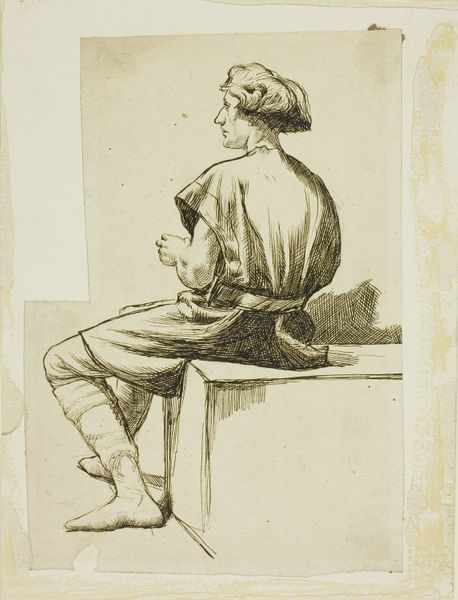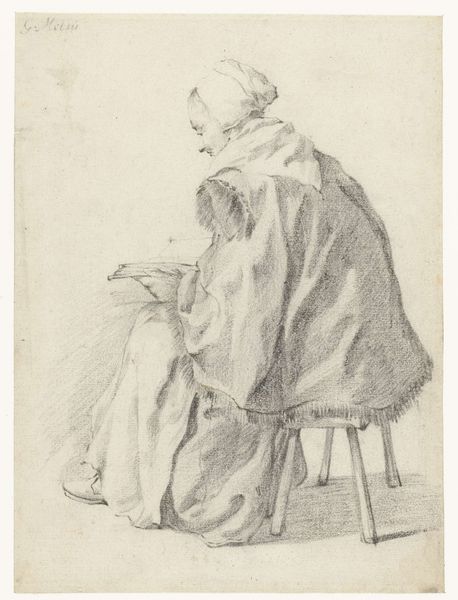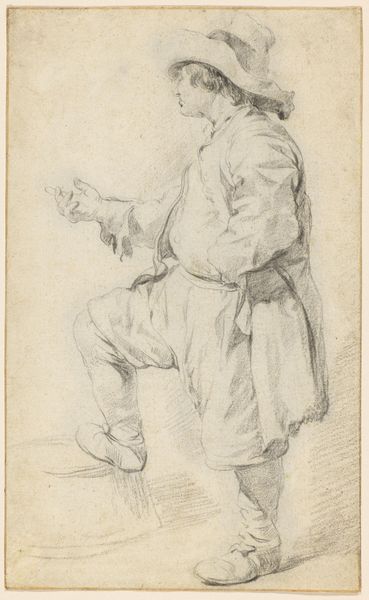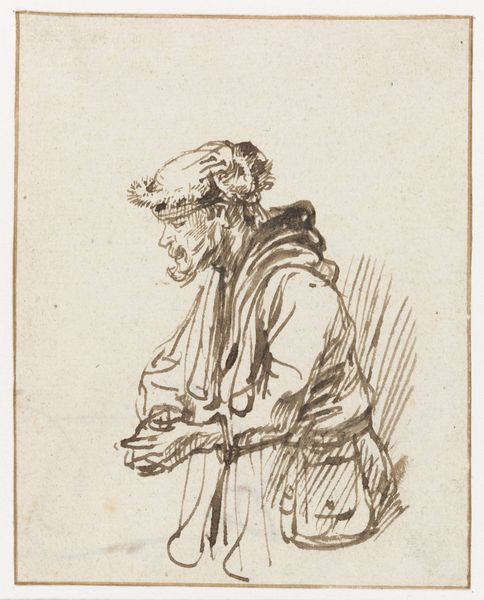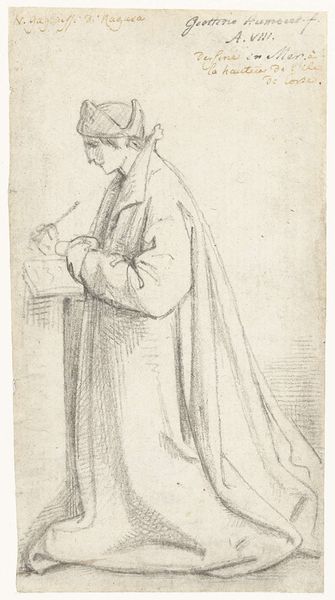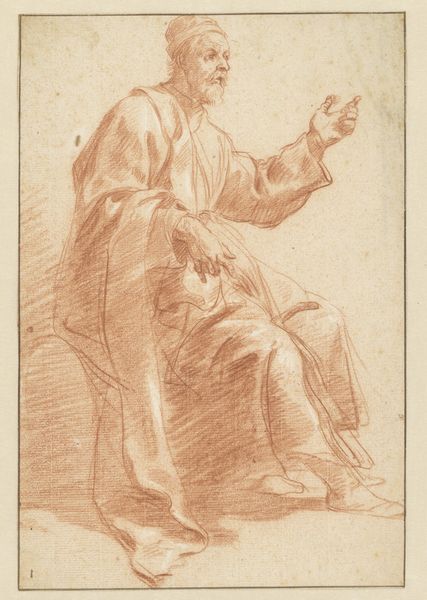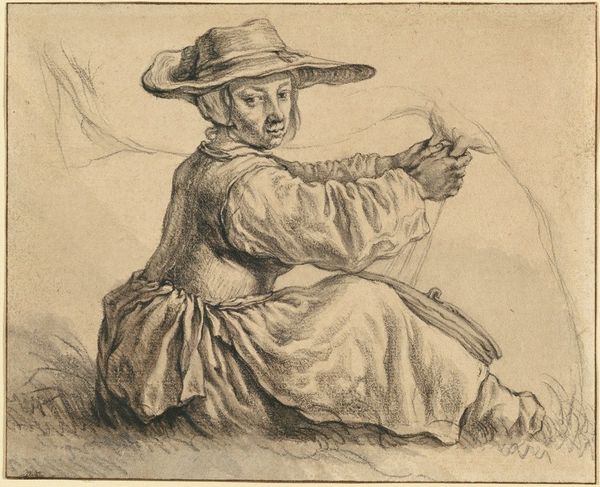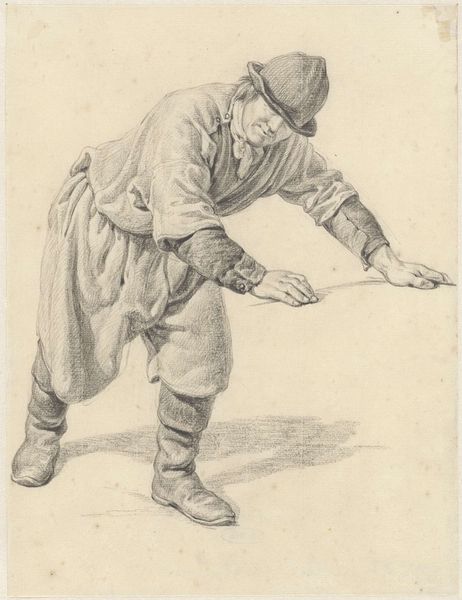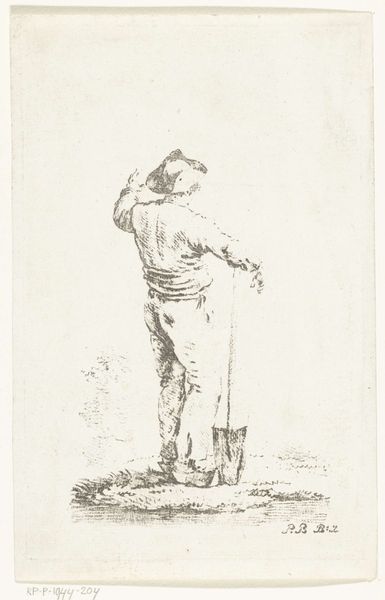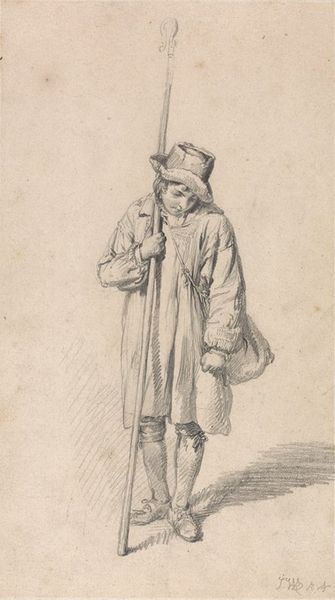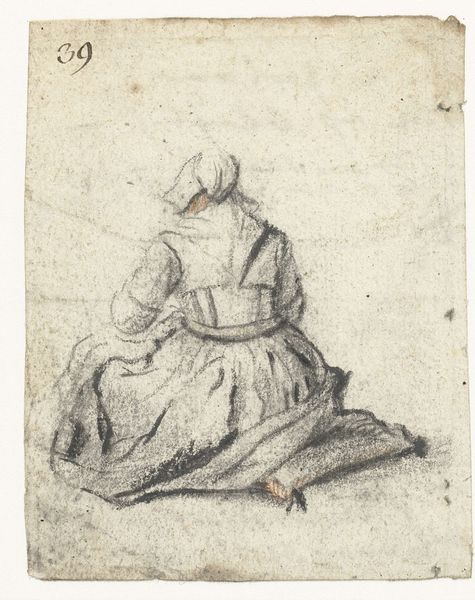
drawing, pencil
#
portrait
#
pencil drawn
#
drawing
#
charcoal drawing
#
pencil drawing
#
pencil
#
genre-painting
Dimensions: height 247 mm, width 206 mm
Copyright: Rijks Museum: Open Domain
Editor: Here we have "Kneeling Man, in Profile," a pencil drawing by Johannes Christiaan Schotel, dating between 1797 and 1838. The lines are delicate, and the subject seems lost in contemplation. What strikes you about its formal qualities? Curator: The subtle gradations of tone, achieved through varying pencil pressure, construct a palpable sense of form. Note how the artist employs cross-hatching to build density and volume, particularly in the folds of the figure's clothing. Observe also the carefully rendered textures that animate the surface of the paper. Editor: The subject matter seems like a simple genre painting. Is there more to it than that? Curator: Indeed. While superficially a genre piece, its merit lies in the exquisite control of line and value. The composition directs the viewer’s gaze to the subtle gesture of the hand, prompting contemplation of its significance within the depicted scene. Ask yourself what exactly is being offered or presented here. How does the economy of line contribute to the overall feeling conveyed by the work? Editor: It's amazing how much depth and character Schotel achieved with just a pencil. The attention to detail really brings the figure to life, despite its simplicity. Curator: Precisely. The drawing exemplifies how masterful manipulation of purely formal elements—line, tone, composition—can transcend representational function, achieving a profound aesthetic effect. The subject becomes almost secondary to the overall structural beauty of the work. Editor: That’s given me a completely new perspective on what makes this drawing compelling. Focusing on technique reveals the depth within the apparent simplicity. Curator: Understanding the visual mechanics gives us the key to unlock meaning, or rather appreciate the multi-layered qualities present even in sketches.
Comments
No comments
Be the first to comment and join the conversation on the ultimate creative platform.
